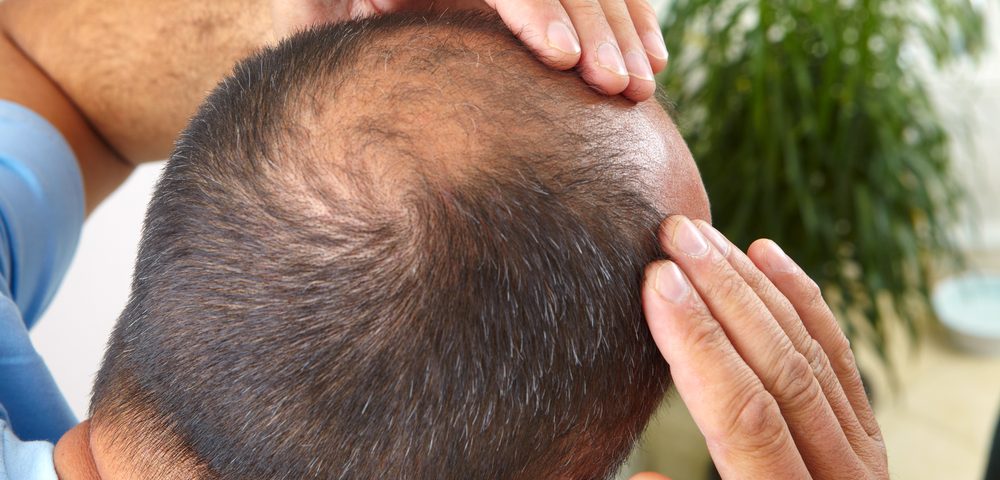Researchers recently reported that men with a common form of hair loss known as androgenetic alopecia (AGA) were also more likely to develop benign prostatic hyperplasia (BPH) and metabolic syndrome. Now, a new study further supports a connection between that hair loss and prostate size, and suggests that baldness can even be used as a prognostic factor for prostate enlargement later in life.
The new study, “An observational Study of the Association between Androgenetic Alopecia and Size of the Prostate,” conducted by Kanagaraj Ramsamy and colleagues from two hospitals in India, was published in the journal International Journal of Trichology.
Both AGA and BPH are disorders characterized by the presence of high levels of dihydrotestosterone (DHT), an androgen hormone. In the scalp, the enzyme 5a-reductase converts testosterone to DHT, which causes the progressive thinning and atrophy of hair follicles in certain areas , resulting in hair loss. In the prostate, increased levels of DHT are responsible for the development of BPH and urinary symptoms. Other studies show that male baldness may be associated with disorders such as diabetes and metabolic syndrome (a group of risk factors that increases the risk of type 2 diabetes and cardiovascular disease).
Despite growing evidence of an association between male hair loss and prostate size, studies have not adequately linked the two.
For this reason, the 65 patients in this study included both younger and elderly men, ages 35 to 65 years old, who underwent transabdominal ultrasound, an easy and non-invasive method to assess prostate size, so the researchers could investigate the relationship between male AGA and BPH.
Excluded were patients with less severe forms of AGA (grades 1 and 2), those being treated with minoxidil or any medication that affected prostate size or hair growth (such as finasteride), and patients on androgenic supplements, or with a history of hair transplantation, prostatic disease, or prostate cancer.
The severity of AGA was clinically determined using the Hamilton–Norwood classification, in which grades 3 to 5 were considered moderate AGA, and grades 6 and 7 were considered severe AGA. For results from the transabdominal ultrasounds, prostates with a volume of 20 ml were considered normal, while prostates with bigger volumes were scaled, with grade 1 given to volumes of 20–40 ml, grade 2 used for 40–60 ml, grade 3 for 60–80 ml, and grade 4 for those greater than 80 ml.
Results indicated that both the prevalence of AGA and prostate size increased with age. Indeed, older men had more severe AGA and higher grades of prostate enlargement, whereas younger men had moderate AGA and lower prostate sizes. These findings support the idea that, because these disorders share the same origin, AGA and BPH may develop in the same individuals. Moreover, considering that AGA develops much earlier than prostate enlargement, male hair loss and baldness may be considered a reliable biomarker for BPH prognosis.
“(…) finasteride, a 5-alpha reductase type 2 inhibitor used to treat control AGA, may probably be useful in delaying the onset of BPH and its associated symptoms,” the authors wrote. “Further studies are needed to evaluate this hypothesis.” Other authors have also proposed that dutasteride, a widely used therapy for BPH, can also be tested as a possible protective agent in patients with AGA.


Yes, this is exactly what I have been saying. That BPH is a leading indicator for prostate enlargement and risk of prostate cancer. If we successfully treat the cause of both, ie: increased levels of DHT, not only can we save our hair, but we can also significantly reduce the risk of prostate cancer. I actually wrote a blog article on this exact subject a couple of weeks ago: http://www.stopandregrow.com/how-preventing-hair-loss-can-save-your-life